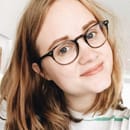Megan Fox. Drew Barrymore. David Bowie. Andy Dick. What do these famous celebrities have in common? All of them identify as bisexual. Tucked neatly in the middle of the LGBTQ acronym rests the “B” for bisexual, an incredibly controversial label. RuPaul, a prolific gay man and fabulous drag queen, once summed up the environment that queer people should offer to each other: “We as gay people get to choose our family and the people we’re around. I am your family. We are a family here.” However, if this was true, why are bisexual people treated as the estranged aunts and uncles never invited to the family reunions?
It can be incredibly challenging to be bisexual. It is a common assumption that bisexual people, liking both genders, are half gay and half straight. This is a toxic belief that strips away the label and validity of the bisexual identity. People, with this idea, are placed in limbo between two communities, not quite accepted by either. The truth is, bisexuality is its own valid identity and not a half of any other. This also encourages a 50-50 ideology, the belief that all bisexual people like both genders evenly and equally. However, all bisexual people experience attraction differently. Some may prefer women to men, or vice versa, and this can even change over time.
People, then, question how authentic bisexuality is. It is no secret that many, especially young teens, identify as bisexual, but as they age, may come out as gay or straight. This continues to perpetuate that bisexuality is an inauthentic label or identity. Sexuality can be incredibly complicated, and may even evolve over time. Feelings for both genders can continue or change. People are allowed to explore their sexualities. They are allowed to try new things and see what they like. Some may then continue to identify as bisexual, while others will come out as something else. However, this change does not alter the fact that there is an entire community of people who are attracted to multiple genders.
One would think that a bisexual person would have an easier time dating by “doubling” their dating pool. This is also untrue. There are so many people who are actually afraid or uncomfortable to date a bisexual person. They may fear infidelity or even that they are not “enough” to satisfy their partner. Neither of these are any more true than it would be for a straight or gay couple. It is entirely unfair to assume that just because a person is attracted to more than one gender that they will cheat, and that they want more of anything: sex, love, attraction. This perpetuates the idea of greed, while infidelity with other sexualities is less of a fear. Would someone in a straight or gay relationship constantly fear being cheated on? Probably not. Being bisexual means an attraction to multiple genders. It does not necessarily mean more attraction or infidelity. Just like straight and gay people, they are attracted to some people, but not all. All relationships are built on trust, companionship, and love, no matter the genders. A bisexual person, just like anyone else, will be with someone because they want to.
Invisibility in the LGBTQ community can be distinctly related to how people perceive bisexuality. The lack of representation of bisexual people in the media and popular culture has allowed for these myths and toxic beliefs to perpetuate. It is no secret that there is a distinct lack of LGBTQ people in movies, television shows, and books, and this is especially true for bisexuals. It is crucial that children and young adults have someone that they can relate to, and media is ever present and a fantastic opportunity. Not having the proper representation is incredibly isolating and even upsetting. Those who are bisexual are often erased, or incorrectly placed into new identities. Stars like Alan Cumming and Freddie Mercury are often said to be gay, while both have clearly stated that they are bisexual. On the opposite spectrum, celebrities like Angelina Jolie and Amber Heard are often assumed to be straight. It is made to seem that bisexuality does not exist, and it is hidden behind the LGBTQ curtain.
This mistreatment is bisexual people is rude. It is cruel. It is frustrating and infuriating. It is deadly. A 2011 study conducted by Joseph Robinson and Dorothy Espelage of the Illinois College of Education showed that while 33% of LGBTQ youth had suicidal thoughts within the past month, 44% of bisexual people reported the same feelings. 21% further reported making at least one suicide attempt within the past year. Biphobia and erasure simply cannot be ignored. There is a definite need to have more support systems in place, and the biphobic acts mentioned need to be corrected. In the best case scenario, it is grossly upsetting to bisexual people, but in the worst cases, this behavior can be fatal. In order to have a better future, people need to make changes today.
There are so many things that bisexuality is not: invalid, greedy, nonexistent, or even the grounds for a poor relationship or infidelity. Yet, there are two things that it is: ever so authentic and beautiful. While some may try to erase it from the LGBTQ population, bisexual people remain persistent and true to themselves and have carved their place in both the acronym and community. They are the estranged family that is misunderstood, but they must continue packing their bags and going on the way to make their presence known and accepted in the world of straight and LGBTQ people.


